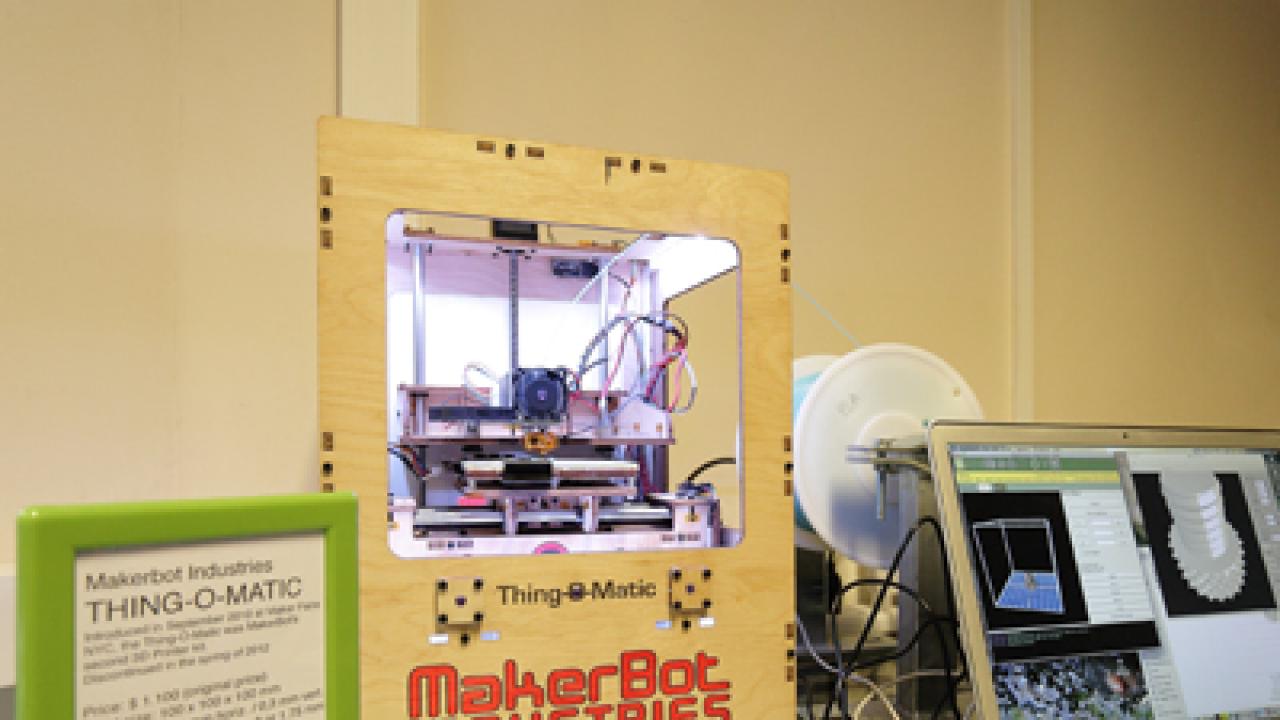
Three-dimensional printers--printers that can produce solid objects out of plastic or other materials--are quickly capturing the world's imagination. United States President Obama highlighted 3D printing in his recent State of the Union speech, describing it as a technology that "has the potential to revolutionize the way we make almost everything."
ICTP has launched a 3D Printing Lab to promote the use of this new, low-cost technology in science education for developing countries. Three-dimensional printers can make solid objects out of plastic or other materials. Using open-source software, the printer creates the objects layer by layer with a molten liquid plastic.
ICTP inaugurated its 3D Printing Lab at a ribbon-cutting ceremony held on Wednesday 27 February. Underscoring the capability of the printers to produce usable objects, ICTP Director Fernando Quevedo cut the ribbon tied across the Lab's main entrance with a pair of scissors created by one of the Lab's 3D printers.
The Lab bears little resemblance to any science lab: rather than test tubes and bunsen burners, the room is filled with several 3D printers, each about the size of a microwave oven, connected to computers that feed programming instructions to them. The printers use spools of corn-based, biodegradable plastic that they melt to create the multiple layers making up their printed objects. At the opening ceremony, the printers were busily creating items such as jewellery, plastic nuts and bolts, and a beautifully intricate, translucent vase. Display shelves in the lab hold other objects printed there, and visitors are encouraged to touch and play with the multi-coloured pieces.
"We designed this lab to be a friendly, modern place open to creativity," said Enrique Canessa, coordinator of ICTP's Science Dissemination Unit (SDU). Canessa, along with colleagues Carlo Fonda and Marco Zennaro, assembled the lab and will be offering a workshop on 3D printing for science education and sustainable development in May.
"We are interested in 3D printing because of its many applications, and with its low cost it can be an accessible technology for the masses," explained Canessa. Added Fonda, "We want to expose Lab visitors to this technology to see what they may invent to fit their needs."
The applications for these printers seem to be limited only by one's imagination. From education to health to engineering, the printers are already making practical impacts. These range from producing prosthetics to printing frames for eyeglasses. On the education front, the SDU team is talking with ICTP mathematicians to discover how to print 3D objects based on geometric formulas, taking advantage of the 3D printers' capabilities to visualize complex structures. Want to 3D-print your own bicycle? That may soon be possible too; according to Marco Zennaro, the trend is for bigger printers that could produce anything from water pipes to houses.
SDU's hope is that the printers will make an impact in developing countries. Their low cost and open source instructions already make the printers an attractive technology for cash-strapped countries, and with SDU's training assistance, developing countries could easily adapt this new technology.
"They need to be aware that this technology exists, and that it is capable of doing many things. ICTP can play an important role as a focal point in helping users choose the right 3D printing to suit their needs, or to make them aware of the various open-source software available," explained Canessa, referring to SDU's target training audience.
Another goal of future training courses is to inspire creativity in education. "We hope that our workshop attendees will be motivated to incorporate new ideas in their own educational efforts, and that they will create new communities around 3D printing in their home countries," said Canessa.
Related blog post from "A girl with a 3D printer"
See the image gallery of 3D printed objects.
















